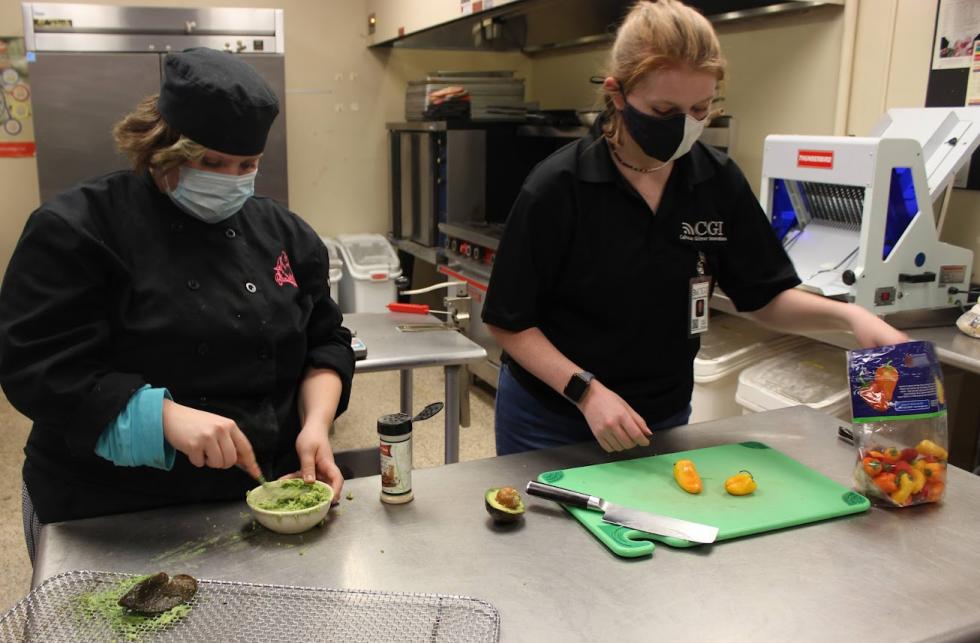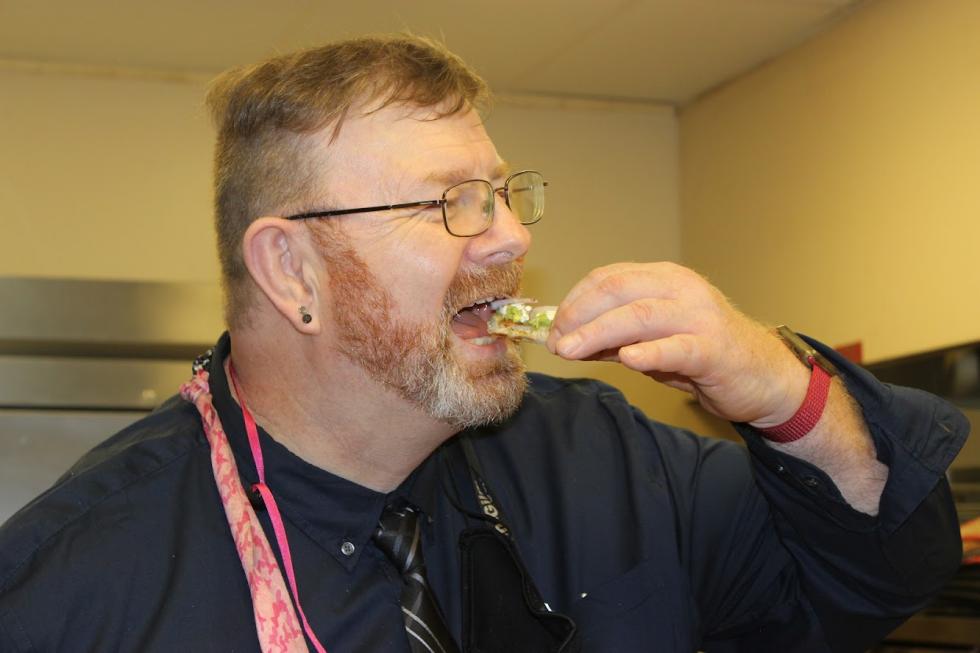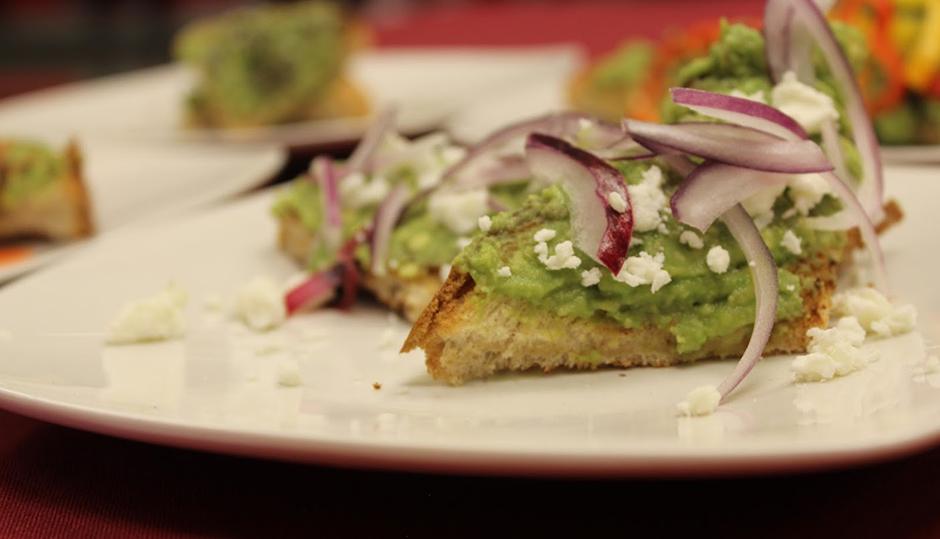A Recipe for Health
CTE Students Help Make Their Community a Healthier Place
By Jean Massey and Diane James, SREB
Students at Calhoun-Gilmer Career Center in West Virginia are getting valuable hands-on experience through their Simulated Workplace classrooms, and in the process, they are helping to improve their community’s health.
In West Virginia’s Simulated Workplaces, students transform their classrooms into authentic workplace environments. Students are treated like employees, work in teams, engage in problem-based learning and work on real-world projects. It’s an effective way for the center to reach its goal of preparing students for the workplace, a trade school or a two- or four-year college.
In the 2019-20 school year, culinary arts instructor, Chef Liljon McCormick presented his students with an essential question: “How can we help our local community through CTE?”
Student Pepper McCormick, sous chef of the Coyote Beautiful Simulated Workplace for culinary arts, said the only guidelines students received for solving the problem were to develop a project that had purpose, provided a service and had an entrepreneurial opportunity. “We began our journey through the design cycle by brainstorming any idea that we could … and boy, did we do a lot of brainstorming,” says McCormick.
Brainstorming sessions led students to realize that nutritional health, especially related to heart disease and diabetes, was a significant problem in their area. According to the Centers for Disease Control and Prevention, West Virginia has the highest rate of adult-onset diabetes — also known as Type 2 diabetes — in the nation. Type 2 diabetes increases risk for other serious health problems such as heart disease or stroke as well as problems with the kidneys, eyes, feet and nerves. The good news is that maintaining a healthy weight through proper diet and exercise is the best way to avoid and perhaps even reverse Type 2 diabetes in its early stages.
Students in the Coyote Beautiful Simulated Workplace realized the project would be immense, so they reached out to two other Simulated Workplaces at the center: Riverside Healthcare, the Simulated Workplace for therapeutic health science, and Calhoun-Gilmer Innovations, the Simulated Workplace for digital technology.
With all three Simulated Workplaces driving the PBL, the idea of a Hometown Healthy Cookbook was born with an emphasis on diabetic needs. Students owned the work, made decisions, were engaged and came to the table full of ideas. Teachers served as facilitators — and got comfortable with not knowing exactly where the project would eventually lead.
Teamwork: Putting Ideas Into Action
 At the beginning of the project,
students from Riverside Healthcare gave a presentation to Coyote
Beautiful and Calhoun-Gilmer Innovations students to give them a
better understanding of how a recipe book could help address
problems related to nutritional health and diabetes in West
Virginia.
At the beginning of the project,
students from Riverside Healthcare gave a presentation to Coyote
Beautiful and Calhoun-Gilmer Innovations students to give them a
better understanding of how a recipe book could help address
problems related to nutritional health and diabetes in West
Virginia.
Caitlin Parson, a Riverside Healthcare student, shared: “It’s an amazing opportunity for the educators as well as the students because it puts us all together to get a better understanding of what diabetes is. We wanted to bring the community together to expand their knowledge as well.”
Calhoun-Gilmer Innovations students created a rough draft layout of the cookbook as Coyote Beautiful students worked to create cookbook-ready recipes. Student Tori Arnold’s Calhoun-Gilmer Innovations team reached out to publishers to investigate the cost of having the cookbook published and also tasked themselves with creating marketing materials to publicize the events associated with Hometown Healthy activities.
Coyote Beautiful students decided to take the cookbook idea a step beyond. While setting up their test kitchen, students realized that it’s easier for people to visually learn how to follow a recipe than to simply read about it. That’s when the Coyote Beautiful team decided to create a YouTube channel and post videos about how to make as many of their Hometown Healthy recipes as possible.
Teachers and Standards
 As the Hometown Healthy Cookbook
project evolved, it became obvious which curricular standards
were being covered. Chef McCormick’s culinary students, for
example, learn about weights, measurements and nutritional
values.
As the Hometown Healthy Cookbook
project evolved, it became obvious which curricular standards
were being covered. Chef McCormick’s culinary students, for
example, learn about weights, measurements and nutritional
values.
Calhoun-Gilmer instructor Virginia McCormick teaches digital technology, broadly covering business and all computer-related topics. The standards that come into play in her classroom include marketing, digital imaging, desktop publishing and photographic documentation.
Nurse Rhonda Williams teaches in the Riverside Healthcare Simulated Workplace. Her students learn about nutrition, the basic food groups and therapeutic diets. “Finding recipes that are good plus healthy for you” is tough, notes Williams.
English is embedded into every Simulated Workplace and career-tech program at Calhoun-Gilmer. Students choose to attend CTE programs because they are interested in those fields. Integrating academic knowledge and skills into CTE classes through content-specific material blends the best of both worlds. Traci Evans, Calhoun-Gilmer’s English teacher, calls it “sneaky learning.” During the Hometown Healthy project, Evans ensures students use concise and meaningful communications in surveys, recipes and the like. Students were also tasked with writing video scripts for their YouTube recipe tutorials.
During the project, students learned a lot without fear of failure. Because learning involves solving problems instead of finding the right answer to a purely right-or-wrong question, “that means we never got anything wrong, unlike regular school,” shared Arnold. “Now we find things that don’t work, and we fix them,” she adds.
COVID-19 Delays
Hometown Healthy students faced many setbacks due to COVID-19. For example, students wanted to host some community events to assess where their neighbors stood in their knowledge of diabetes. Instead of in-person events, however, students were able to administer a survey. Chef McCormick maintained the pandemic delays didn’t disillusion students — in fact the opposite happened: “The most exciting thing that I see students doing is solving problems for themselves and not falling at the first hurdle.”
Contacts: Jonathan (Chef Liljon) McCormick, jmccormick@k12.wv.us; Virginia McCormick, vmccormick@k12.wv.us; Traci Evans, tsevans@k12.wv.us; Ronda Williams, ronda.williams@k12.wv.us
This article was featured in the October 2021 issue of SREB School Improvement’s Promising Practices Newsletter.


